
North American physicians worked in an unregulated, overcrowded, highly competitive and sometimes unethical medical environment. Meanwhile, the scope of surgical practice expanded rapidly due to advances in infection prevention. From this rough and tumble milieu, the American College of Surgeons was formed.
1889
Dr. Franklin H. Martin Opens the Chicago Post-Graduate Medical School

1889
Dr. Franklin H. Martin Opens the Chicago Post-Graduate Medical School
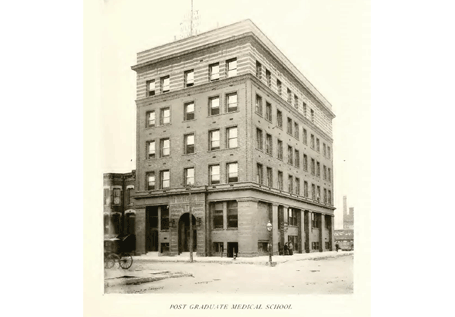


A pioneer in surgical quality and education, Franklin H. Martin, MD, (later FACS), and a colleague opened the Chicago Post-Graduate Medical School, an endeavor that displayed Dr. Martin's formidable entrepreneurial and organizational skills.1 At a time when there was rapid increase in specialty knowledge and no formal residencies, Dr. Martin understood that effective, high quality medical education was critical.2 Dr. Martin would go on to be the key founder of the American College of Surgeons.
Citations
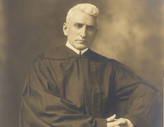
1903
The Society of Clinical Surgery is Formed
1903
The Society of Clinical Surgery is Formed




Arising out of Progressive Era beliefs in active learning, the Society of Clinical Surgery started out as a travel club for young surgeons focused on the general advancement of surgery. Franklin H. Martin, MD, (later FACS), who would go on to organize the American College of Surgeons, said the formation of the new Society was, for "the surgery of the world and to the conservation of surgical patients" the "greatest impulse since the work of Pasteur and Lister."3 Many of the surgeons who figured prominently in the early days of the College were from the Society.
Citations
1905
The Debut of Surgery, Gynecology & Obstetrics, a Scientific Journal by and for Surgeons

1905
The Debut of Surgery, Gynecology & Obstetrics, a Scientific Journal by and for Surgeons
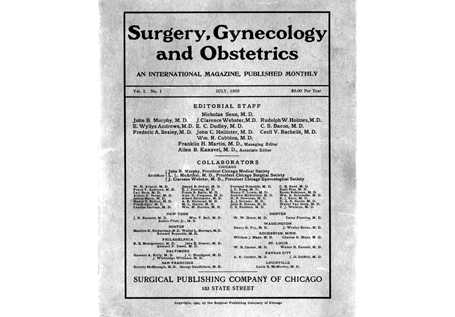
The scientific journal Surgery, Gynecology & Obstetrics realized the desire of Franklin H. Martin, MD, (later FACS), for an independent professional journal – what he called "a practical journal for practical surgeons edited by active surgeons rather than literary writers remotely connected with clinical work."4,5 The first article in the first issue, which was published in July 1905, focused on the use of iodine as a surgical antiseptic.6 The journal would later be renamed the Journal of the American College of Surgeons.
Citations
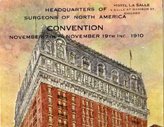
1910
First Clinical Congress Draws a Crowd
1910
First Clinical Congress Draws a Crowd

During a Mediterranean cruise with his wife, Franklin H. Martin, MD, (later FACS), hatched the idea for a "show me" rather than "tell me" conference.7 Others believe the inspiration may have been the Society of Clinical Surgery.8 In any case, subscribers to the journal Surgery, Gynecology & Obstetrics were invited to come to Chicago to visit the surgical clinics of Chicago. Dr. Martin hoped to register up to 200 doctors for a two-week program featuring lectures and operating room demonstrations by leading Chicago surgeons. Instead, 1,300 doctors overwhelmed the facilities.9 The assembly began to be called the Clinical Congress of Surgeons of North America.10
Citations
1912
Dr. Martin Proposes National Surgical College
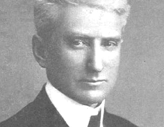
1912
Dr. Martin Proposes National Surgical College
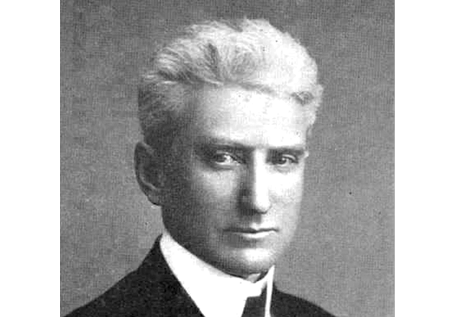
Energized by the success of the Clinical Congress, which met in Philadelphia in 1911 and New York in 1912, Franklin H. Martin, MD, (later FACS), believed he could organize future surgical education
into a College of Surgeons.11 As he rode the Twentieth Century Limited to New York City in November, he wrote down a five-point plan.12 He suggested the "college" be modeled after the "Royal Colleges of Surgeons of England, Ireland, and Scotland."
Citations



